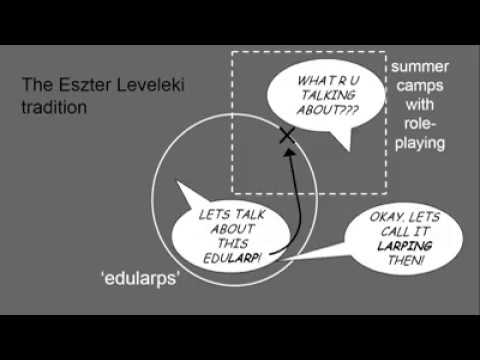Tag: Talk
-

Solmukohta 2020 Futurespective: Sharon Underberg
It’s a retrospective – from the year 2040! Sharon Underberg tells us what’s happened in their world of larp “in the past 10 years”.
-

Solmukohta 2020: Kaisa Kangas – Seaside Prison – Designing Larp for Wider Cultural Audiences
Seaside Prison is a larp about life in Gaza. In this talk we discuss the its creation, its aims, & the futures for larp in the culture establishment.
-

Solmukohta 2020: Mátyás Hartyándi – Larp – Oddity, Hypernym or what?
A talk about the future and self-definition of larps for those who are interested in overlapping activities and/or multidisciplinary cooperations.